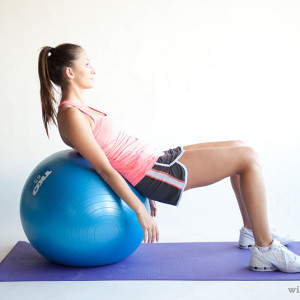
Wouldn’t it be nice if we could just think ourselves fit? I mean really just a few moments of intense thought and “poof” we are fit.
Or perhaps we could just buy the right clothes or the right exercise equipment and that would do the trick. I think there is a lot of misinformation about wellness. It is not a quick fix, it’s a lifestyle.
Many marketing campaigns may make you think that it is simple to be well, but in reality it requires a lifestyle change. It is also about keeping yourself educated on the latest research concerning your health. Let’s take a new look at some old myths.
- Myth: You should stretch before you workout.
- Truth: You need to warm up properly before exercise, in other words mimic your routine at a less intense pace until you have the blood flowing and muscles warm.
For example, if you are getting ready to run, then take the first few minutes to walk fast, jog slow and then run.
If you are doing resistance training, then you can begin by performing the exercises with little or no weight for the first few minutes and then begin your routine or you can also warm up on a piece of cardio equipment as well.
Recent studies indicate that pre-event static stretching (not bouncing, but holding a stretch of a period of time) can actually impair performance in sports requiring explosive power, like jumping or sprinting. For optimal results you should stretch after your workout. Yes, after your workout, do static stretching to lengthen the muscle and maintain a full range of motion around the joints.
- Myth: As long as you exercise sometime in the day sitting for long periods of time is not bad for your health.
- Truth: According to a recent article titled “Exercise Myths That Won’t Go Away” by Beth Shepard, M.S, ACE-CPT, ACSM-RCEP and certified wellness coach, several research studies has begun to emerge suggesting that long, uninterrupted periods of sedentary behavior are bad for your health.
These long periods of sitting watching TV, working at the computer, or reading, can even be bad for people who engage in regular structured physical activity. Australian researchers at the Heart and Diabetes Institute at the University of Queensland determined that longer than average bouts of sitting and lying down are associated with a higher percentage of body fat in women.
More research will be emerging on this subject but the take away here is to be as active as possible throughout the day, in addition to your regularly scheduled workouts. Take the stairs instead of the elevator, park further away from the entrance, walk instead of driving whenever possible, take a 10 minute stretching break at work, mow your own yard, clean your own windows, and even walk your own dog. Every step counts toward a healthier you.
- Myth: To burn fat, exercise at a lower intensity.
- Truth: Shepard said to forget the “fat burning zone” just get out there and move. Your body burns both fat and carbohydrate calories to meet the demands of exercise.
The proportion of fat or carbohydrate burned in a given workout depends on exercise intensity and duration, but when it comes to weight control the type of calories burned with exercise does not really matter. Low to moderate intensity exercise can be sustained for longer periods than higher intensity exercise but higher intensity burns more calories per minute than low intensity.
So, base your exercise intensity on your goals, your fitness level, health status and how it makes you feel.
See you in the gym.
Linda Stollings is a personal fitness trainer in Bristol, Tenn. Email her at lstollings@fitprescriptions.com






